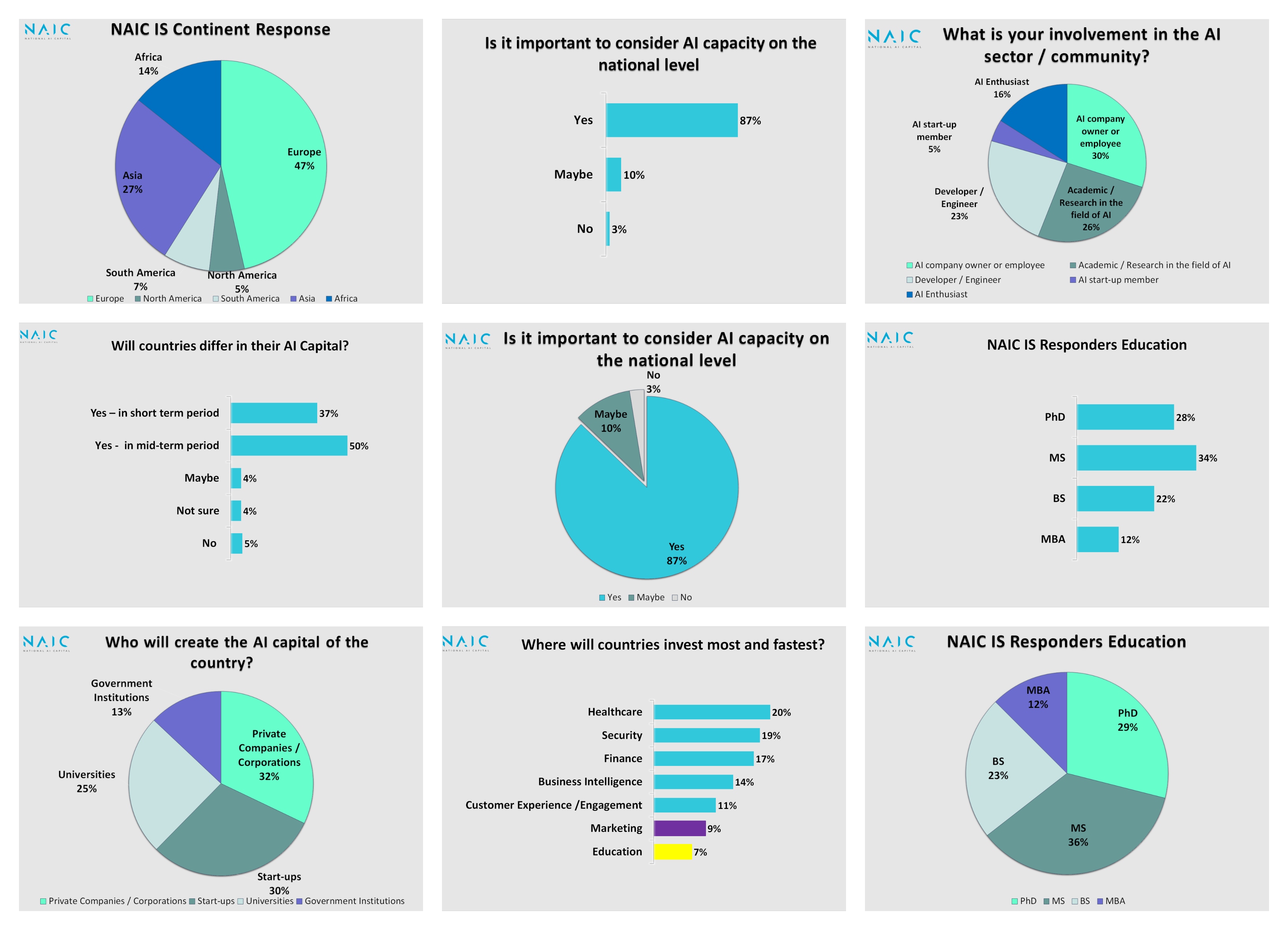December 11, 2020 - Aco Momcilovic continues his national AI capital journey - how to grasp the current status of a company and estimate its potential?
As a result of an NAIC Initial Global Survey, the final definition was fine-tuned based on the inputs from 200+ AI experts from around the world (56 countries). Elaboration of the definition is available in this article.

The proposed methodology was also fine-tuned and completed to form a dynamic set of factors that will be assessed for each country/ unit of measurement.
But before we describe the methodology itself, let's return to WHY are we doing this? What is the importance of the National AI Capital?
Why?
“If we don’t act now we don’t have a future” is the sentence I heard in different forms, at many conferences, and meetups and discussions in recent years. People working in the AI field are warning us about it. As some results of NAIC IGS showed us, the development of AI could be a great differentiator between countries or a great equalizer. But we need to act now.
To quote Erik Brynjolfsson, director of the MIT Initiative on the Digital Economy: “This is a moment of choice and opportunity. It could be the best 10 years ahead of us that we have ever had in human history or one of the worst because we have more power than we have ever had before.”
Artificial intelligence could be general-purpose technology, one of those who changed the history of the world. GPTs are best described by economists as “changes that transform both household life and the ways in which firms conduct business.” The four most important GPTs of the last two centuries were the steam engine, electric power, information technology (IT), and possibly artificial intelligence (AI).
NAIC Methodology
The methodology is proposing that NAIC will have 5 dimensions and 15 factors in total to be assessed and included in the final score and profile. The last one – is a dynamic one and can partially differ from country to country based on their specifics.
5 Dimensions in a Dynamic Model
D1 Human Capital / Talent Dimension
D2 Government / Politics Dimension
D3 Private Sector Dimension
D4 Academic / Research Dimension
D5 Specific / Additional Dimension
In those 5 dimensions, we have 15 factors and each of them is defined more precisely and could include some sub-segments.
Human Capital / Talent Dimension
1 Number of engineers/developers working in the field
2 Number of engineers/developers dealing with related fields
3 Number of non-engineering talent working in the field of AI
Government / Politics Dimension
4 The national long term AI vision and strategy
5 Legal frameworks for AI
6 Number of national AI development projects
7 Number of AI system implementations at the state level
8 The amount of data collected and structured that can be used to develop AI
Private Sector Dimension
9 Corporation/Private firms
10 Number of AI start-ups
Academic / Research Dimension
11 Amount of scientific/research papers/ number of patents
12 Connection of AI scene with the world community and knowledge exchange
Specific / Additional Dimension
General Distinctive | Country-Specific |
13 Combined national super-computing power dedicated to AI projects
14 Specific capacities (example: the ability to produce AI-specific hardware)
15 Percentage (%) of jobs substituted by AI and automatization
Consequences
If countries raise awareness about their National AI Capital, if they make and implement mid-term vision and strategies, and if they work on the improvement of their NAIC profiles many positive changes will happen.
One possibility if countries react on time and in a proper manner, (or only for those who do that), is to achieve the level of AI development where the widespread availability and low prices of AI will make it more of a utility like electricity or water, versus a competitive differentiator.
And those with a high NAIC Index will as a consequence increase the country’s/citizens' social and economic well-being and national competitiveness in a sustainable manner as stated in our definition.
Conclusion
The second phase of data gathering and exploration will start soon, together with many institutional partners.
Even at this moment, there are different groups of students working on some parts of methodology, and gathering and processing data while working on the NAIC Student Project, created for the specific purpose of cooperation with universities. The number of Universities that are participating is growing every month. Special thanks to the first 5 of them:

COOPERATION: For the second phase we will enlarge the number of
academic institutions,
AI/tech associations,
companies that are willing to sponsor/participate and contribute
media who will become partners will get new data and articles first
If you are interested in collaboration, in any of those segments — contact me on
This email address is being protected from spambots. You need JavaScript enabled to view it.
Donations
If you want to support further this project and share your enthusiasm, be free to donate symbolic amounts of Ethereum (ETH) to this address: 0x29e574B5A65e1d7De2B177b53996A26A6729514F
To learn more about this topic, please check Aco's profile on Medium.com.
For the latest travel info, bookmark our main travel info article, which is updated daily.
Read the Croatian Travel Update in your language - now available in 24 languages.


